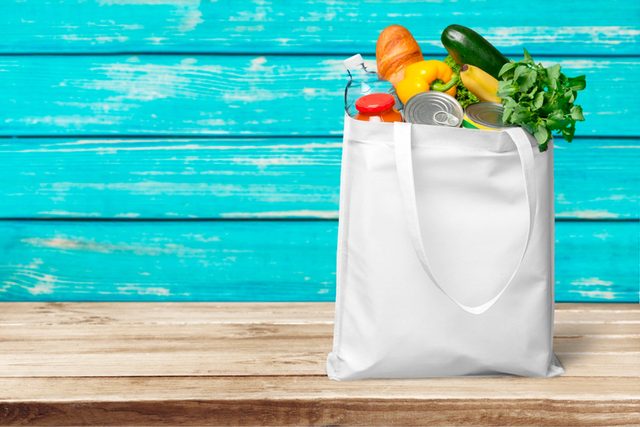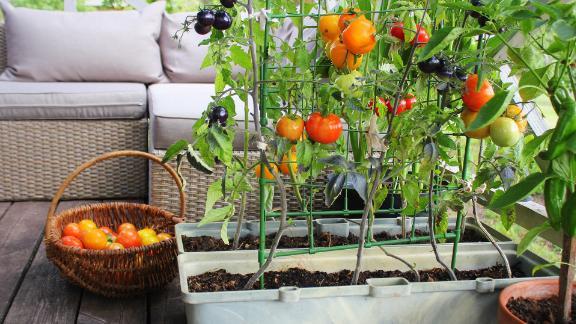Leading a more eco-friendly life is not just about stopping the use of plastic items or segregating biodegradable from degradable materials. It means making smart decisions that do not harm your environment and its natural resources. It is about a choice of how to live your life on a day-to-day basis. In a gist, it goes beyond words and concepts. It is doing the right things to protect the planet for the next generations. It is living with the intent to practice good habits and using them to influence your family, friends, and community. While it’s true that it would take a majority to create significant change, taking steps forward in your own little ways can make a real difference. All it takes is to say ‘YES’ and start living with purpose. Here are 15 of the best practices to live a more conscientious, earth-friendly lifestyle.
Step 1: Conserve energy at home
Do you know that energy is very crucial in the generation of electricity and potable water? To reduce carbon footprint and monthly power consumption, make it a habit to turn off the appliances that you are not using. Leaving them on a standby mode still consumes energy. Other simple ways of energy conservation at home are:- maximizing the daylight by opening your windows or curtains
- turning off the lights after use
- getting proper insulation and cooling system
- fixing leakages
- reducing air-drying of clothes using a dryer and opting for a traditional clothesline if your place gets plenty of sunlight
- installing solar panels
Step 2: Invest in energy-efficient technology
Buy energy-efficient devices, appliances, and gadgets. They are designed to reduce energy consumption. Products that are energy efficient have a 5-star rating. CFL bulbs, for example, may cost more but can last ten times longer and consume up to 40% less energy. In addition, LED light bulbs are the most efficient and cost-effective. They only use 75% less energy but deliver the same amount of illumination. Opt for appliances that are powered by inverter technology. Compared to conventional appliances, the inverter-equipped refrigerator, air conditioner, or washing machine is more efficient, has a longer lifespan, and operates without noise.Step 3: Use earth-friendly cleaning products
 Most commercial cleaning products have harmful chemicals that can harm the environment when not properly disposed of. Repeated exposure to them is also hazardous to your health. To cut the risks, look for more organically-made products or create your own using safe ingredients.
Avoid self-care products with microbeads or tiny pieces of non-biodegradable solid plastic. When these microbeads make their way to the water sources and enter the food chain, they can harm the environment and human health.
Most commercial cleaning products have harmful chemicals that can harm the environment when not properly disposed of. Repeated exposure to them is also hazardous to your health. To cut the risks, look for more organically-made products or create your own using safe ingredients.
Avoid self-care products with microbeads or tiny pieces of non-biodegradable solid plastic. When these microbeads make their way to the water sources and enter the food chain, they can harm the environment and human health.
Step 4: Practice the 3 R’s
The waste hierarchy’s 3 R’s are Reduce, Reuse, and Recycle. They aim to lessen the amount of generated waste and enhance the process of waste management.- Reduce – It means cutting back the volume of trash you generate at home or work. The best way to do it is to keep your environment clutter-free and clean. Other ways to practice this habit are bringing reusable bags when you go shopping, using reusable water bottles instead of buying bottled water or beverages, opting for products with less packaging, and packing your meal in a lunchbox.
- Reuse – Don’t throw away your old clothes or unwanted items around your house. You may reuse or donate them to give them a new purpose. If you have lots of old toys that you want to discard, consider donating them to the nearest charity institution or volunteer group. For bigger items, why not have a garage sale? It is a good way to get rid of them and get a certain portion of their original value.
- Recycle – Recycling reduces pollution, saves energy, and protects natural resources. It involves sorting, cleaning, and turning primary materials into secondary materials. Fix items that are still usable — don’t throw them. It lessens the need to utilize virgin resources or raw materials.
Step 5: Choose locally-produced, organic, or sustainable goods
 Patronize local businesses or local markets, rather than supermarkets or malls as much as possible. If you have friends selling organic or homemade products, support their business ventures. Buying local encourages more small entrepreneurs to create more sustainable goods –from food to household items.
Patronize local businesses or local markets, rather than supermarkets or malls as much as possible. If you have friends selling organic or homemade products, support their business ventures. Buying local encourages more small entrepreneurs to create more sustainable goods –from food to household items.
Step 6: Cut back meat consumption
Meat production is responsible for massive greenhouse gas emissions, chemical run-off, water usage, and pollution. Animal-based food production consumes a higher amount of greenhouse gas output because of the transfer of plant energy to animal energy. Reducing your consumption of meat and dairy products can lead to a lesser carbon footprint.Step 7: Stop throwing foods
Waste not when it comes to food. Discarded foods add a significant amount of carbon to the landfills, not to mention the resources, energy, and production costs in their transport. Start matching your purchase to actual food consumption by having a grocery list and planning a weekly menu. You can also practice composting the ‘best by’ food items before putting them into the trash bin. It will reduce the buildup of methane gas due to anaerobic breakdown. Composting saves disposal costs and gives you natural plant fertilizers.Step 8: Walk more, drive less
Another good practice of living an eco-friendly life is to carpool with your co-workers or taking public transportation. You do not only reduce your carbon footprint, but you save a lot of money that goes to fuel or gasoline. You can also use a bike or walk when doing errands within walking distance.Step 9: Grow your own garden
 If you are living in a condo or place that does not have outside space, you can grow your vegetables and herbs in small pots or windowsill boxes. If you have extra space outdoors, growing a vegetable patch is a good idea. Plants provide a good amount of oxygen and filter the air in your space. You also get fresh produce year-round, reducing your food budget.
If you are living in a condo or place that does not have outside space, you can grow your vegetables and herbs in small pots or windowsill boxes. If you have extra space outdoors, growing a vegetable patch is a good idea. Plants provide a good amount of oxygen and filter the air in your space. You also get fresh produce year-round, reducing your food budget.
Step 10: Conserve household water usage
Every drop of water is precious, so start the habit of taking shorter showers and reusing the water you use during laundry. Do your laundry once a week, fix leaky faucets, and install water-efficient toilets. When brushing your teeth, washing the dishes, or cleaning the kitchen, do not keep the water running. Less water consumption saves infrastructure cost and energy consumption, as well as loss of water due to contamination. It ensures an adequate supply of clean water for everyone.Step 11: Invest in reusables and stop buying disposables
It means saying no to single-use bags, plastic cups, glasses, forks and spoons, disposable diapers, paper napkins and towels, and other consumer goods that do not last long. Always find a sustainable alternative for things you need in your home. They may cost more, but in the end, you save money because of their long life expectancy. Use rechargeable batteries, refillable coffee thermos, vegetable-grade lunch boxes, durable razors, cloth napkins, and other quality items that give value to your money. Using reusables also reduces pollution and greenhouse gas emissions due to the production and disposal of disposables.Step 12: Buy recycled products
If you want repurposed or recycled items that are creatively crafted by suppliers, buy from local artisans. It is one way of contributing to the local economy while being an environmentally caring person.Step 13: Avoid impulse buying, just buy what you need
If you have a tendency to buy items because you like them but usually become idle in your house, stop the habit. You are not only wasting your hard-earned money, but also they would clutter your personal space. You can rent tools, equipment, or party supplies if you just need them for a day or short period. Invest your money and resources on things that you and your family will use long-term. Avoid buying more than what you need to prevent too much clutter and waste of money. These items typically do not add value to a quality life.Step 14: Give new life to your old electronics
E-waste from discarded electronic devices and gadgets contributes to the problem of promoting environmentally sound waste management. You can help reduce this problem by donating your old or unused electronic goods to charitable institutions that refurbish and redistribute them to communities or individuals who need them. If they are no longer serviceable, search recyclers or dispose of them properly.Step 15: Volunteer or join environmental groups
Taking a further by joining an environmental group is the ultimate way to show your love to Mother Earth. Join tree planting programs, spread awareness on proper waste management, protect watersheds from industrial waste dumpers, or participate in other causes that promote a healthier ecosystem.Takeaway
Living an eco-friendly life would mean letting go of some modern inconveniences and going to the basics. However, knowing that you are contributing to the preservation and protection of the environment gives a sense of pride and purpose. You know that you are doing your share and responsibility to leave a healthier and safer planet to future generations.Like What you've read?
If so, please join our newsletter and receive exclusive weekly home buying tips, financing guides and Philippine real estate news. Enter your email and click Send Me Free Updates










